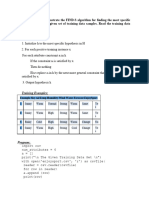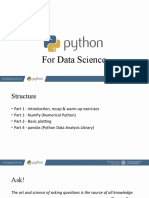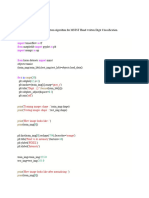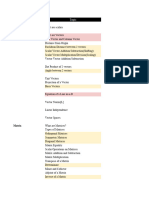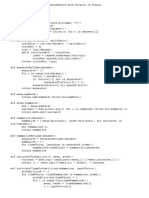0% found this document useful (0 votes)
39 views12 pagesAAL Programs
The programs demonstrate machine learning algorithms like KNN, K-Means clustering, locally weighted regression, backpropagation neural networks and genetic algorithms. Program 6 implements Q-learning reinforcement learning.
Uploaded by
Malavika 20 AIMLCopyright
© © All Rights Reserved
We take content rights seriously. If you suspect this is your content, claim it here.
Available Formats
Download as PDF, TXT or read online on Scribd
0% found this document useful (0 votes)
39 views12 pagesAAL Programs
The programs demonstrate machine learning algorithms like KNN, K-Means clustering, locally weighted regression, backpropagation neural networks and genetic algorithms. Program 6 implements Q-learning reinforcement learning.
Uploaded by
Malavika 20 AIMLCopyright
© © All Rights Reserved
We take content rights seriously. If you suspect this is your content, claim it here.
Available Formats
Download as PDF, TXT or read online on Scribd
/ 12
